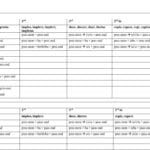Hey language lovers! Get ready to laugh your way to Spanish fluency! This guide breaks down the verb “reír,” meaning “to laugh.” We’ll explore its various forms, from chuckles to guffaws, and conquer its conjugation, transforming you into a Spanish-speaking laughter maestro.
Laughing in Spanish: A Deep Dive into Reír
Laughter is universal, but expressing it in Spanish involves the verb reír. This irregular verb doesn’t follow typical conjugation patterns. This guide demystifies reír conjugation, enabling you to express joy and amusement in Spanish with confidence. Mastering its 18 tenses, including the reflexive form reírse (to laugh at oneself), allows for nuanced expression in diverse contexts. The stem-changing nature and irregular preterite tense of reír may pose a challenge, but focused study and practical application are key to success. Beyond basic conjugation, exploring idiomatic expressions involving reír will enrich your communication and connect you with Spanish speakers on a deeper level.
Present Tense: Reír in the Now
The present tense is your starting point for expressing laughter happening right now. This table provides the foundation of your reír journey:
| Pronoun | Conjugation | Example |
|---|---|---|
| Yo | río | Yo río mucho con mis amigos. (I laugh a lot with my friends.) |
| Tú | ríes | Tú ríes con facilidad. (You laugh easily.) |
| Él/Ella/Usted | ríe | Él ríe a carcajadas. (He laughs uproariously.) |
| Nosotros/Nosotras | reímos | Nosotras reímos juntas en el cine. (We laugh together at the movies.) |
| Vosotros/Vosotras | reís | Vosotros reís de mis chistes. (You all laugh at my jokes.) |
| Ellos/Ellas/Ustedes | ríen | Ellos ríen sin parar. (They laugh non-stop.) |
Past Tense: Recalling Laughter with Reír
Reír has two main past tenses:
- Preterite (Completed Action): Captures a specific moment of past laughter. For example, “Ayer reí mucho” (Yesterday, I laughed a lot). The full conjugation is: reí, reíste, rió, reímos, reísteis, rieron.
- Imperfect (Habitual Action): Describes ongoing or repeated laughter in the past. For example, “Cuando era niño, siempre reía con mis hermanos” (When I was a child, I always laughed with my siblings). The full conjugation is: reía, reías, reía, reíamos, reíais, reían.
Future Tense: Anticipating Laughter
Expressing future laughter is more straightforward using the future tense: “¡Mañana reiremos mucho en la fiesta!” (Tomorrow, we’ll laugh a lot at the party!). The conjugation is: reiré, reirás, reirá, reiremos, reiréis, reirán.
Conditional Tense: Hypothetical Laughter
The conditional tense expresses possible laughter depending on a condition: “Si viera esa película, reiría mucho” (If I saw that movie, I would laugh a lot). The conjugation is: reiría, reirías, reiría, reiríamos, reiríais, reirían.
Subjunctive Mood: Laughter with Uncertainty
The subjunctive conveys desires, doubts, and possibilities related to laughter. “Espero que rías mucho hoy” (I hope you laugh a lot today) illustrates its use. The present subjunctive conjugates as: ría, rías, ría, riamos, riáis, rían. The imperfect subjunctive exists but is less common. For an in-depth understanding of the intricacies of the saber subjunctive, explore our dedicated resource.
Imperative Mood: Commanding Laughter
The imperative mood tells someone to laugh. “¡Ríe!” (Laugh!) is a simple example. Other forms include: “¡No rías!” (Don’t laugh!), “¡Riamos!” (Let’s laugh!), “¡Reíd!” (Laugh! – plural, Spain).
Gerund and Past Participle
- Gerund (riendo): Used for ongoing actions, like “Estoy riendo” (I am laughing).
- Past Participle (reído): Used in compound tenses with haber, as in “He reído mucho hoy” (I have laughed a lot today).
Expanding Your Laughter Lexicon
- Sonreír (to smile): A gentle expression of happiness.
- Reírse de (to laugh at): Can be unkind; use with caution.
- Carcajearse (to guffaw): A loud, boisterous laugh.
Tips for Mastering Reír
- Practice regularly to internalize the conjugations.
- Embrace reír’s irregularity as a unique characteristic.
- Context clues will often guide you to the correct tense.
- Don’t be afraid of mistakes; they’re part of the learning process.
Exploring Laughter and Humor in Spanish
Beyond reír, Spanish offers a rich vocabulary for expressing amusement. “Reír,” an irregular verb, is conjugated across 18 tenses, reflecting the diverse ways we experience laughter. Its stem changes and irregular preterite tense require careful study. The reflexive reírse adds another layer of expression, allowing you to convey laughing at oneself or something. Mastering these forms opens doors to understanding Spanish conversation and culture more deeply. Idiomatic expressions like “reír a carcajadas” (to laugh heartily) provide a more nuanced understanding of how laughter is expressed in Spanish.
There’s ongoing research into the best ways to learn irregular verbs. Some suggest focusing on common tenses first, while others advocate for immersion. Experiment to find what works best for you. If you seek to master the conjugation of the versatile reussir, delve into our comprehensive guide here.
Decoding Volver: A Guide to its Conjugations
This guide provides a comprehensive overview of the verb volver (to return), breaking down its conjugations across various tenses. Mastering volver, a regular -er verb with a stem change (o -> ue), is fundamental for expressing the concept of returning in different contexts.
Present Tense: Returning Now with Volver
| Pronoun | Conjugation | Example |
|---|---|---|
| Yo | vuelvo | Yo vuelvo a casa. (I return/am returning home.) |
| Tú | vuelves | Tú vuelves mañana. (You return/are returning tomorrow.) |
| Él/Ella/Usted | vuelve | Él vuelve tarde. (He returns/is returning late.) |
| Nosotros/Nosotras | volvemos | Nosotros volvemos juntos. (We return/are returning together.) |
| Vosotros/Vosotras | volvéis | Vosotros volvéis pronto. (You return/are returning soon.) |
| Ellos/Ellas/Ustedes | vuelven | Ellos vuelven en tren. (They return/are returning by train.) |
Beyond the Present Tense
While the present tense is essential, volver has various other forms. These tenses allow you to express a wider range of meanings, such as “I will return,” “I used to return,” and “I would return.” There is ongoing research into the most effective ways to learn irregular verbs. Some linguists suggest mastering the most frequent tenses first, while others emphasize immersive learning. Find what works best for you.
Conjugating “Ir”: A Comprehensive Guide
The Spanish verb ir (to go) is highly irregular. It doesn’t follow the conjugation patterns of regular -AR, -ER, or -IR verbs. This guide provides conjugation charts and examples for every tense, making it easy to understand and use ir correctly. Mastering ir is essential, as it is used not only for expressing movement but also for future actions and idiomatic expressions.
Present Tense Conjugation of “Ir”
| Subject Pronoun | Conjugation | Example Sentence |
|---|---|---|
| yo | voy | Yo voy al cine. (I’m going to the movies.) |
| tú | vas | Tú vas al parque. (You’re going to the park.) |
| él/ella/usted | va | Él va a la escuela. (He’s going to school.) |
| nosotros/as | vamos | Nosotros vamos a la playa. (We’re going to the beach.) |
| vosotros/as | vais | Vosotros vais a la fiesta. (You all are going to the party.) |
| ellos/ellas/ustedes | van | Ellos van al restaurante. (They’re going to the restaurant.) |
“Ir” in Different Contexts
Ir is frequently used with “a” + infinitive to express future actions (“Voy a comer” – I’m going to eat). It also appears in idiomatic expressions like “¿Cómo te va?” (How’s it going?). The irregularity of ir necessitates memorization and practice. Comparing ir to regular -IR verbs like vivir can aid understanding. Research suggests that consistent exposure and active recall are key to memorizing irregular verbs. Therefore, experiment with ir in different contexts to solidifiy your understanding.
- Sept 31 Myth: Unveiling Calendar Secrets - March 18, 2025
- How Long & Till December 18, 2025: Accurate Countdown Guide - March 18, 2025
- Discover Japanese Artists: A Complete History - March 18, 2025

















1 thought on “The Ultimate Guide to Reír Conjugation: Master All Tenses & Speak Spanish Fluently”
Comments are closed.